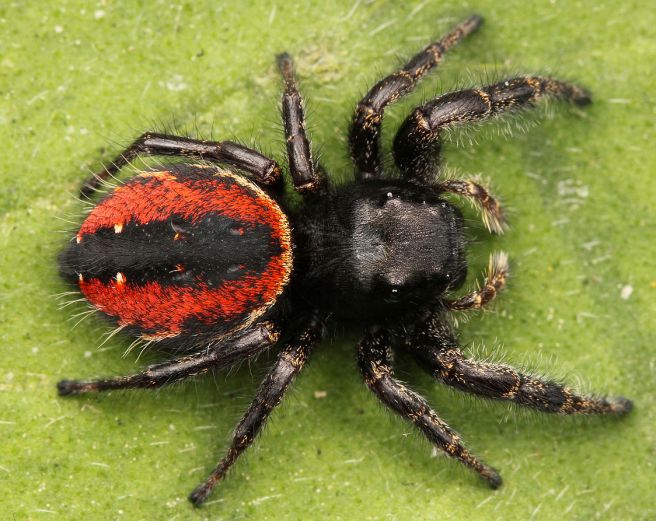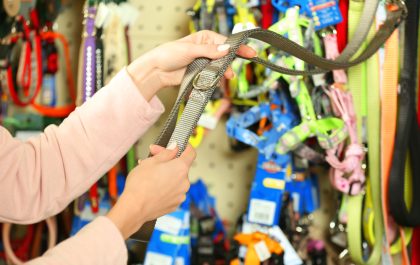Size: Adults can grow up to 1.5cm in body length.
Colour: Reddish-brown with a darker stripe down the middle of the body.
Temperament: Usually docile and not aggressive towards humans.
Habitat: Found in homes, gardens, and other sheltered areas.
Diet: Feed on insects such as flies and mosquitoes.
Lifespan: Females can live up to 2 years, males up to 1 year.
Reproduction: Females lay around 100 eggs in a sac and guard them until they hatch.
Care: Low maintenance pets, just provide a small enclosure with hiding spots and a water dish.
Health Issues: No known health issues specific to this species.
Legalities: Legal to keep as pets in most countries.
Are you considering getting a Red House Spider as a pet? If so, you’ve come to the right place! This article will provide you with all the information you need to know about Red House Spiders, from their behaviour and diet to their suitability as pets. We’ll also discuss the pros and cons of having a Red House Spider as a pet, so you can make an informed decision about whether or not this spider is the right pet for you. So, read on to learn more about these fascinating spiders!
Introduction to Red House Spiders
The Red House spider (Badumna longinqua) is a species of spider native to Australia, and is one of the most popular spiders kept as pets. These spiders have a distinctive red colouration, with a body length of up to 14mm, and a leg span of up to 40mm. They are generally quite docile, and can be handled without fear of being bitten.
Red House spiders are nocturnal, and are most active at night. They feed on insects, and can be kept with other spiders. They require a warm, humid environment, and should be kept in a terrarium or aquarium with a mesh lid, and a substrate of soil or peat moss. They can also be kept in a plastic container, with a few holes in the lid for ventilation. It is important to provide them with hiding places, such as pieces of bark or logs, and to mist the enclosure once or twice a week. These spiders are relatively easy to care for, and can make a great addition to any pet collection.
Benefits of Keeping Red House Spiders as Pets
Red House Spiders are a popular choice for pet owners in Australia due to their hardiness and low maintenance. These spiders are native to Australia, and can be found in a variety of habitats, including gardens, woodlands, and urban areas. Keeping Red House Spiders as pets is a rewarding experience for many, as they are relatively easy to care for and can provide companionship.
The benefits of keeping Red House Spiders as pets include the fact that they are low maintenance, require minimal space, and are relatively inexpensive. They are also relatively hardy and can withstand a wide range of temperatures and humidity levels. They are also generally non-aggressive and can be handled with care. Additionally, they can provide an interesting and educational experience for children, as they can teach them about the natural world and the importance of conservation.
How to Care for Red House Spiders
Red House Spiders are a popular choice for those looking to keep an arachnid as a pet. These spiders are relatively easy to care for and make a great addition to any home. Here are some tips on how to properly care for a Red House Spider.
First, it is important to provide the right habitat for your spider. Red House Spiders prefer dark and damp environments, so it is best to provide a terrarium with a substrate of moist soil or moss. The terrarium should also have some sticks and rocks for the spider to climb and hide in. Additionally, the terrarium should be kept at a temperature of 20 to 25 degrees Celsius and should be misted regularly to keep the humidity high.
Next, it is important to provide your spider with the right diet. Red House Spiders prefer to eat insects such as crickets, mealworms, and waxworms. It is best to feed your spider two to three times a week, as overfeeding can be detrimental to their health. Additionally, it is important to provide fresh water for your spider to drink. A shallow bowl of water should be placed in the terrarium and changed regularly.
Choosing the Right Enclosure for Your Red House Spider
The Red House Spider is a popular pet choice for Australian spider enthusiasts. While these spiders are generally low-maintenance, one important factor to consider when keeping them as pets is the enclosure. It is important to choose an enclosure that is both suitable for the spider and safe for humans.
When choosing an enclosure for a Red House Spider, it is important to consider the size of the spider. These spiders can grow up to 3 cm long, so it is important to choose an enclosure that is large enough to provide the spider with enough space to move around. Additionally, the enclosure should have a secure lid, as these spiders are known to be escape artists. It is also important to choose an enclosure with good ventilation, as this will help to keep the spider’s environment healthy.
When it comes to materials, it is best to choose an enclosure made of plastic or glass, as these materials are easy to clean and will not be damaged by the spider’s webbing. It is also important to provide the spider with plenty of hiding places, such as twigs, bark, and leaves. These items will provide the spider with a safe and comfortable environment. Finally, it is important to provide the spider with a shallow dish of water, as this will help to maintain the spider’
Feeding Your Red House Spider
Red House Spiders are becoming increasingly popular as pets in Australia due to their docile nature and low maintenance requirements. As with any pet, it is important to ensure that your Red House Spider is fed properly.
The best food for your Red House Spider is small insects such as crickets, mealworms, and waxworms. These should be dusted with a calcium supplement to ensure that your spider is getting the nutrients it needs. Live prey should be offered to your spider once or twice a week, with the size of the prey being appropriate for the size of your spider. You can also offer your spider pre-packaged insect food, which is available from most pet stores.
In addition to insects, your Red House Spider should also be offered a variety of fruits and vegetables. These should be cut into small pieces and offered to your spider once or twice a week. Some of the best fruits and vegetables to offer include apples, oranges, carrots, and sweet potatoes. It is important to ensure that the food is fresh and free from pesticides.
Handling Red House Spiders
Red House Spiders are a species of spider native to Australia that can make an interesting and unique pet. These spiders are relatively easy to care for, and can provide an interesting and educational experience for the entire family. When it comes to handling Red House Spiders, it is important to remember that they are wild animals and should be treated with respect.
When handling Red House Spiders, it is important to be gentle and slow. It is best to use a pair of tweezers to pick up the spider, and to be careful not to squeeze too hard. It is also important to be aware of any signs of agitation or distress from the spider. If the spider appears to be uncomfortable, it is best to put it back into its enclosure. It is important to remember that Red House Spiders may bite if they feel threatened, so it is best to avoid any sudden movements or loud noises. With a little patience and care, it is possible to enjoy having a Red House Spider as a pet.
Common Health Issues and How to Treat Them
Common Health Issues
Common health issues that can affect red house spiders as pets include dehydration, nutritional deficiencies, and moulting problems. Dehydration occurs when the spider does not have access to enough water. This can be caused by a lack of humidity in the enclosure, or if the spider is not drinking enough water. Nutritional deficiencies can occur if the spider is not receiving the proper nutrients. This can be caused by improper feeding or a lack of variety in the diet. Moulting problems can occur when the spider does not have access to the proper temperature and humidity levels needed for successful moulting.
How to Treat Them
To treat dehydration, it is important to provide the spider with access to water. This can be done by misting the enclosure or by providing a shallow dish of water. To treat nutritional deficiencies, it is important to provide the spider with a variety of foods, such as crickets, mealworms, and other insects. To treat moulting problems, it is important to maintain the proper temperature and humidity levels in the enclosure. This can be done by using a thermostat and hygrometer to monitor the environment. Additionally, it is important to provide the spider with a safe and secure hiding place to help them feel comfortable during the moulting process.
Final Thoughts
Red House Spiders can make an interesting and unique pet for those looking to keep an arachnid. These spiders are native to Australia and are relatively low-maintenance and hardy. They require a warm, humid environment, and should be fed a variety of insects. Additionally, it is important to provide them with a secure enclosure and plenty of hiding places. With the right care and attention, Red House Spiders can make a great addition to any home.
Red House Spiders as Pets FAQs
Yes, Red House Spiders can make great pets for arachnid enthusiasts. They are easy to care for and have fascinating behaviors to observe.
Red House Spiders require little special care. They need a container with good ventilation and a source of water. Feeding them regularly is also important.
Red House Spiders should not be handled with bare hands. Instead, use a soft-bristled brush or a piece of paper to gently move them if necessary.
Red House Spiders can live up to two years in captivity with proper care.
Red House Spiders are generally not dangerous to humans, although they do have venom. However, if you are allergic to spider bites, it is not recommended to keep them as pets.
Red House Spiders are a common species of spider found in homes throughout the world. They are typically reddish-brown in color and are known for their small size.
Red House Spiders are known for their unique web-building behaviors, including creating intricate webs and using their silk as a means of communication. They also have interesting hunting techniques.
Red House Spiders typically feed on small insects such as flies and mosquitoes. They are also known to eat other spiders.
Red House Spiders prefer warm, dark, and humid environments. They often make their webs in corners, crevices, and other secluded areas of the home.
Red House Spiders can often be found in and around homes. However, it is recommended to purchase them from a reputable breeder or pet store to ensure their health and well-being.





